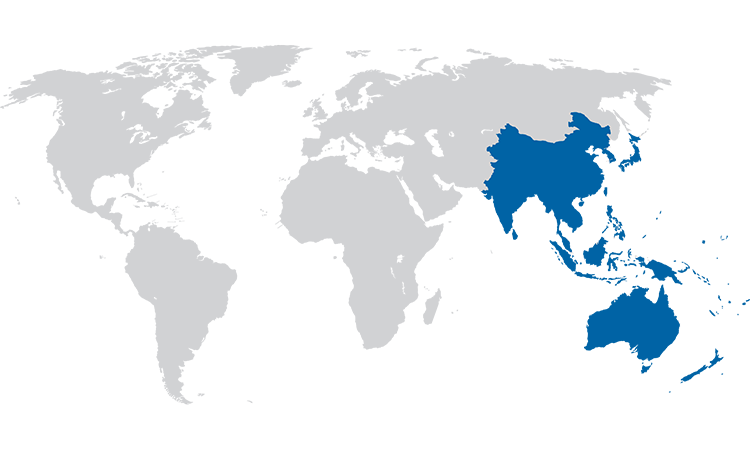The Growing Influence of PIC/S in Asia Pacific

The Asia Pacific region, which comprises 24 culturally diverse countries, contains 60% of the world's population and is the fastest growing region in the world today
This article describes the growing influence of Pharmaceutical Inspection Co-operation Scheme (PIC/S) in the Asia Pacific region. Of the 24 countries in the Asia Pacific region, 19 are being influenced in some way by PIC/S in their regulation of medicine manufacturer
PIC/S was established in 1995 as an extension of the Pharmaceutical Inspection Convention (PIC), which had been created in 1970 and entered into force in 1971. 1
PIC/S celebrated its 40th anniversary with an international symposium involving regulatory authorities and industry representatives in Geneva, Switzerland, in May 2011. During the symposium, Dr Margaret Hamburg, the Commissioner of the US Food and Drug Administration (FDA) at that time, delivered a keynote address that summarized succinctly the role and importance of PIC/S as a global leader in helping to ensure the quality of medicines. 2 She said: No one country is capable of inspecting the world on its own. The US FDA considers PIC/S to be a global leader in helping to ensure the quality of drugs. For the US FDA, PIC/S represents the best way to avoid duplication of efforts and to allocate resources based on risk. All Regulatory Authorities should cooperate more closely and share information on GMP inspections.
But what is PIC/S? PIC/S is an informal cooperative arrangement between regulatory authorities in the field of Good Manufacturing Practice (GMP) for medicinal products for human and veterinary use. As membership of PIC/S is not legally binding, it enables information such as GMP inspection reports to be exchanged with ease between member authorities. The above statement by Dr Hamburg clearly encapsulates PIC/S’s information-exchange role.
Membership of PIC/S is open to any regulatory authority that has a system of GMP inspection controls in place that is equivalent to the procedures and requirements of current PIC/S member authorities. Currently, there are 49 regulatory authorities from around the world that are members of PIC/S. (Refer to Table 1 below.) The Thailand Food & Drug Administration (Thai FDA) was the most recent regulatory authority to become a member of PIC/S in August 2016.
An essential prerequisite to becoming a member of PIC/S is that the applicant authority must have in place a fully functional Quality Management System covering the systems and procedures of the Inspectorate, including GMP inspection procedures, manufacturer licensing procedures, document control procedures, complaint and recall handling procedures, a program for the training of inspectors, Code of Ethics for inspectors, etc. PIC/S aims to harmonize GMP inspection procedures by developing common standards in the field of GMP and providing training opportunities for GMP inspectors. It also aims to facilitate cooperation and networking between competent authorities, thus increasing mutual confidence and trust.
This is reflected in the PIC/S mission statement, which is:
To lead the international development, implementation and maintenance of harmonised GMP standards and quality systems of inspectorates in the field of medicinal products.
60% of the world’s population lives in the Asia Pacific region Fastest growing region in the world – blockquote highlight
The philosophy of PIC/S is based on cooperation, communication, and trust. As information sharing within PIC/S is voluntary, it is up to the receiver of the information to decide how to use it. For example, a member authority can use the outcome of an inspection conducted by another member authority to avoid duplicating an inspection.
- 1History of PIC/S (https://picscheme.org/en/history)
- 2Dr Margaret Hamburg’s keynote presentation given at the PIC/S 40th Anniversary Symposium (http://www.fda.gov/NewsEvents/Speeches/ucm257974.htm).

| Argentina Australia Austria Belgium Canada Chinese Taipei Croatia Cyprus Czech Rep. (hum) Czech Rep. (vet) Denmark Estonia Finland |
France (hum) France (vet) Germany Greece Hong Kong Hungary Iceland Indonesia Ireland Israel Italy Japan Korea Rep. |
Latvia Liechtenstein Lithuania Malaysia Malta Netherlands New Zealand Norway Poland Portugal Romania Singapore Slovak Rep |
Slovenia South Africa Spain Sweden Switzerland Thailand Ukraine UK (hum) UK (vet) USA |
Growing Influence Of Pic/s In Asia Pacific
Of the 24 countries in the Asia Pacific region, 19 are being influenced in some way by PIC/S in their regulation of medicine manufacturers. This is summarized in Table 2 below.
It is worth noting that of the nine regulatory authorities that became members of PIC/S over the past 4 years, seven of these authorities were from the Asia Pacific region. Furthermore, there are at least six regulatory authorities, including China and India, that are showing an interest in joining PIC/S. This highlights the strong interest in PIC/S being shown by regulatory authorities in Asia Pacific.
Although the regulatory authorities of Cambodia, Laos, and Myanmar have not yet shown an interest in joining PIC/S, they have committed to using a “PIC/S-equivalent GMP inspection framework” under the Association of Southeast Asian Nations (ASEAN) Sectoral Mutual Recognition Arrangement (MRA) on GMP,3 including the adoption of the principles of the PIC/S GMP requirements.
Although only four of the 10 ASEAN member countries are currently members of PIC/S, regular cooperation between PIC/S and the ASEAN Consultative Committee takes place whenever PIC/S training seminars are held in the ASEAN region. The purpose of these meetings is to discuss how PIC/S can support those ASEAN inspectorates seeking to join PIC/S as well as support the training of inspectors from the ASEAN region.
In recognition of the growing importance of the Asia Pacific region, PIC/S has over the past 9 years arranged for its annual training seminars for GMP inspectors to be held in three different locations in the Asia Pacific region. Furthermore, the PIC/S training seminar in 2017 will be held in Taipei. (Refer to Table 3 below.)
Incidentally, the 2016 PIC/S training seminar was held in Manchester, UK, on the topic of “Inspectorates of the Future.” 4
Although PIC/S training seminars are open only to GMP inspectors (from PIC/S member authorities and authorities interested in joining PIC/S), ISPE usually arranges for an appropriate representative to give an “industry perspective” presentation related to the seminar topic.
The current Vice Chairman of PIC/S is Meow Hoe Boon of the Health Sciences Authority (HSA) in Singapore. He will become the Chairman of PIC/S in 2018 for a period of 2 years. (The current Chairman of PIC/S is Paul Hargreaves of MHRA, UK.) Boon is currently the Chairman of a PIC/S project to establish the PIC/S Inspectorates’ Academy (PIA), which is an online training platform for PIC/S GMP inspectors.5 ISPE is in regular communication with Boon about contributing ISPE e-learning training materials to the PIA.
| Current PIC/S Members (at 1 August 2016) | Interested in joining PIC/S | Using the PIC/S GMP Guide | |
| Australia | From January 1993 | P.R. China | Cambodia |
| Singapore | From January 2000 | India | Laos |
| Malaysia | From January 2002 | Bhutan | Myanmar |
| Indonesia | From July 2012 | Brunei | |
| New Zealand | From January 2013 | Vietnam | |
| Chinese Taipei | From January 2013 | Philippines | |
| Japan | From July 2014 | ||
| South Korea | From July 2014 | ||
| Hong Kong | From January 2016 | ||
| Thailand | From August 2016 | ||
| Singapore | 2007 | Inspection of the Manufacture of Solid Dosage Forms |
| Kuala Lumpur, Malaysia | 2010 | GMP Inspection of Manufacturers of Traditional/Herbal Medicinal Products |
| Nusa Dua, Indonesia | 2015 | Biopharmaceuticals (Biotechnology & Biologicals): How to Inspect |
| Taipei, Chinese Taipei | 2017 | Quality Control Laboratories; How to Inspect |
Upcoming challenges for PIC/S will include the handling of membership applications from the regulatory authorities of China and India, which are expected to be submitted in the future. These two regulatory authorities will be difficult to assess in comparison to most other applicant authorities, mainly because of their use of decentralized inspection offices covering vast areas of China and India.
From the time the formal application is lodged, it usually takes between 3 and 4 years for an applicant authority to become a member of PIC/S. Applications that exceed the 6-year timeline set by PIC/S are rejected. This has happened to at least three applicant authorities to date, but each of these authorities was invited to re-apply—which it did. An applicant authority can request a “stop clock” of up to 12 months in situations such as the adoption of new legislation or a major reorganization by an authority.
The first stage of the assessment process involves a desktop review of the systems and procedures of the Inspectorate against a checklist of 78 key indicators to determine whether the Inspectorate’s Quality System and related procedures are equivalent to PIC/S requirements. This desktop review is undertaken by a rapporteur and co-rapporteur appointed by the PIC/S Committee, with this stage usually taking 1 or 2 years to complete.6
The next stage of the assessment process is an onsite visit by a PIC/S assessment team of five or six experienced PIC/S inspectors to confirm that the Quality System of the Inspectorate is acceptable and determine whether GMP inspections are equivalent to PIC/S inspection standards. The latter involves observing several typical GMP inspections to see how inspections are performed and how manufacturers, particularly manufacturers with GMP problems, are handled.
While the length of a PIC/S assessment visit is usually 1 week, more than a week may be needed for China and India to observe a good cross section of regional inspection offices, including their operations, procedures and inspection standards. The PIC/S assessment team will usually include one or two persons who speak the language of the country in which the assessment is being undertaken.
During the assessment period, various changes and improvements are usually recommended by PIC/S. If necessary, follow-up visits are undertaken to verify the suitability of corrective actions.
Summary
Of the 24 countries in the Asia Pacific region, 19 are being influenced in some way by PIC/S in their regulation of medicine manufacturers. The regulatory authorities of 10 of these countries are already members of PIC/S, while at least another six countries are showing interest in becoming members of PIC/S, including the regulatory authorities of China and India.The assessments of China and India for PIC/S membership will be a challenge for PIC/S mainly because of the use of decentralized inspection offices covering vast areas of these countries.
- 3ASEAN Harmonization on GMP Inspection and Training of Inspectors. Sia Chong Hock, Robert Tribe and Dr Chan Lai Wah. Pharmaceutical Engineering, January/February 2013, Volume 33, No. 1, pp. 56−62.
- 42016 PIC/S Training Seminar, Manchester, UK (https://picscheme.org/en/news).
- 5PIC/S Inspectorates’ Academy (PIA) (https://picscheme.org/en/pia-home)
- 6PIC/S Accession procedure (https://picscheme.org/en/accession-procedure)


